11 diverse cultural wonders to discover
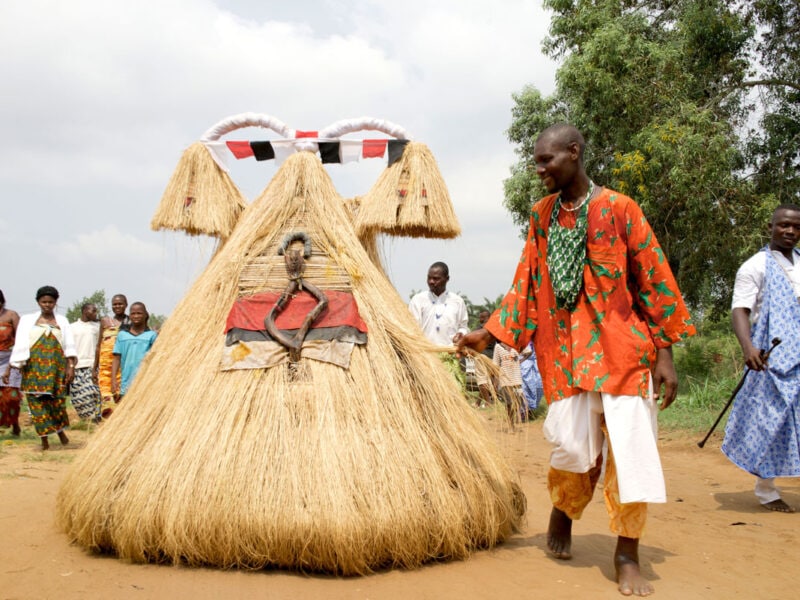
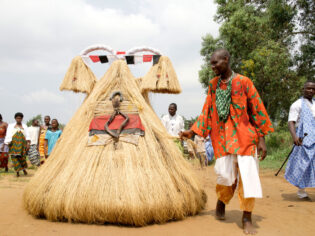
Embrace travel that expands your worldview. It’s time to uncover these cultural wonders.
If you travel to learn about and understand the people, cultures, customs and heritage of unique places around the world, this action-packed list will keep you busy for a good while.
1. Melanesian Arts & Culture Festival, Vanuatu
Travelling with: Angela Saurine
Bush nuts rattle around the ankles of the men from Papua New Guinea’s West New Britain province as they move across the field to the beat of wooden drums. Wide-eyed children sit cross-legged on the grassy slope watching the dancers, dressed in colourfully dyed grass skirts, elaborate feather headdresses and shell necklaces, with the flags of South Pacific nations fluttering in the breeze behind them.
Once the performance is over, the Huli wigmen take to the stage, their faces painted bright yellow, with a hornbill beak on their back to symbolise strength and courage and a dangling pigtail belt designed to attract women.
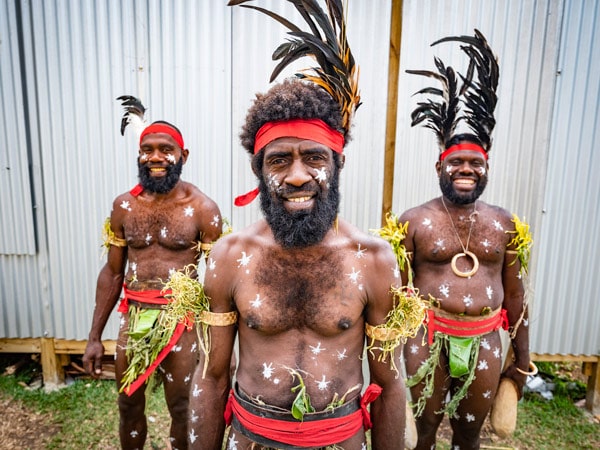
Melanesian Arts & Culture Festival celebrates the vibrant culture of tribes across Papua New Guinea. (Image: David Kirkland)
It’s an extraordinary privilege to see dances often only performed in remote villages in PNG, West Papua, Vanuatu, Fiji, the Solomon Islands, Kanaky/New Caledonia and Torres Strait Islands showcased in the same place in such short succession at Port Vila’s Saralana Park for the 7th Melanesian Arts & Culture Festival.
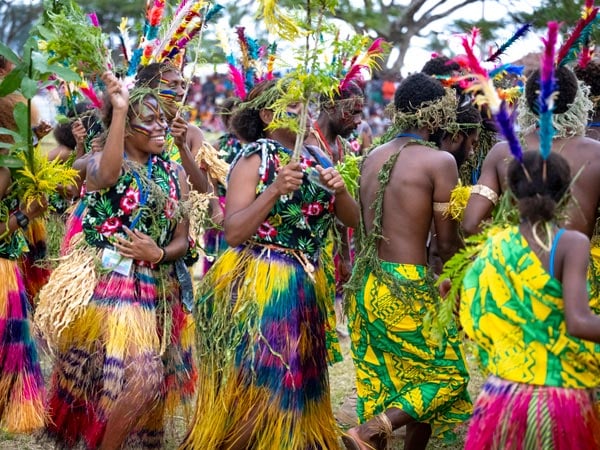
Melanesian dancers are dressed in colourfully dyed grass skirts. (Image: David Kirkland)
Performers range in age from prepubescent boys to elderly men with wiry grey beards, passing on their longstanding cultural traditions to the next generation. First held in the Solomon Islands in 1998, the event occurs in a different country every four years, with Fiji set to host in 2026.
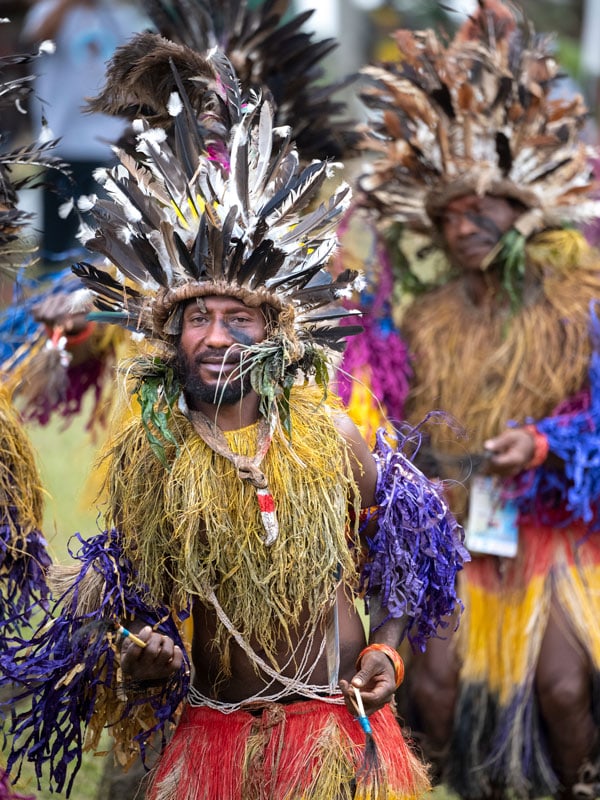
The costumes are intricately adorned with elaborate patterns. (Image: David Kirkland)
2. The artisans of Kyoto, Japan
Travelling with: Carla Grossetti
Kyoto has long been a haven for traditional crafts. And now, a new generation of talented artisans and makers are keeping centuries-old traditions alive by adding their own twists. The Kyoto Artisan Concierge curates visits to studios that celebrate the city’s rich heritage and the one-of-a-kind pieces that are the antithesis of mass-produced wares.
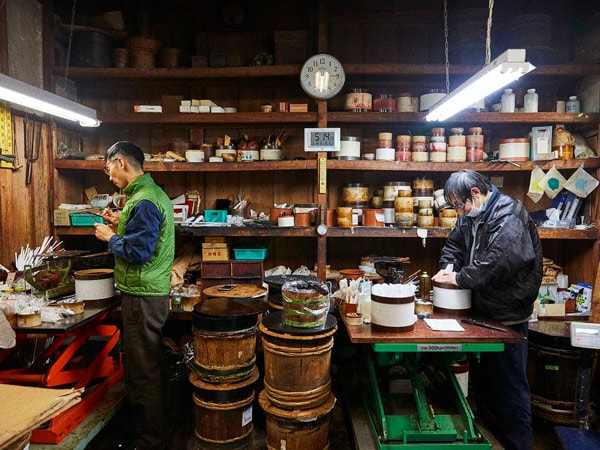
Kyoto artisans apply traditional practices to make surfboards. (Image: Tsutsumi Asakichi)
Observe artisans of Kyoto like Tsutsumi Asakichi, engaged in the modernisation of the ancient practice of sourcing sap from the urushi tree to lacquer things like surfboards. Or the ceramicists breaking the mould by applying contemporary patterns to ancient pottery techniques.
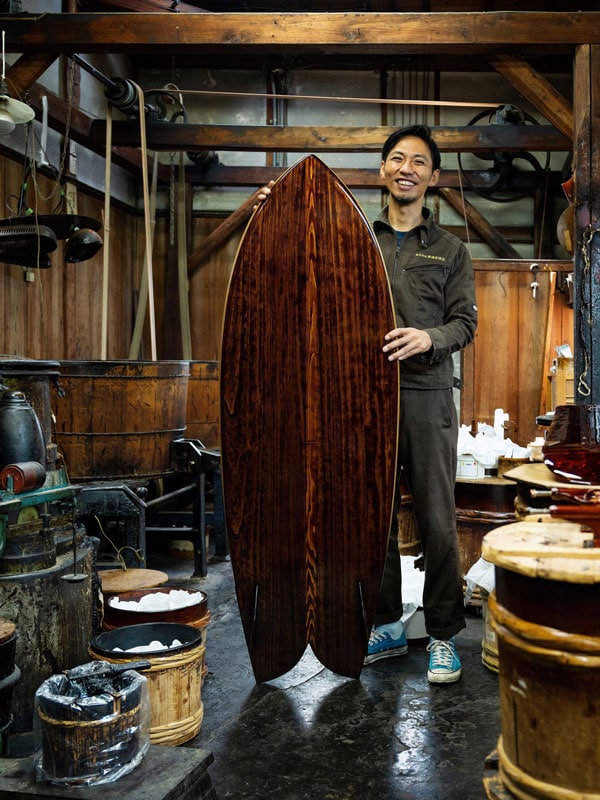
Meet Tsutsumi Asakichi, one of the artisans in Kyoto. (Image: Tsutsumi Asakichi)
3. Día de los Muertos, Mexico
Travelling with: Sarah Reid
Mexico’s ‘Day of the Dead’ is typically held on the first two days of November, though the world’s most vibrant celebration of death usually begins on 31 October when the spirits of the departed return at midnight.
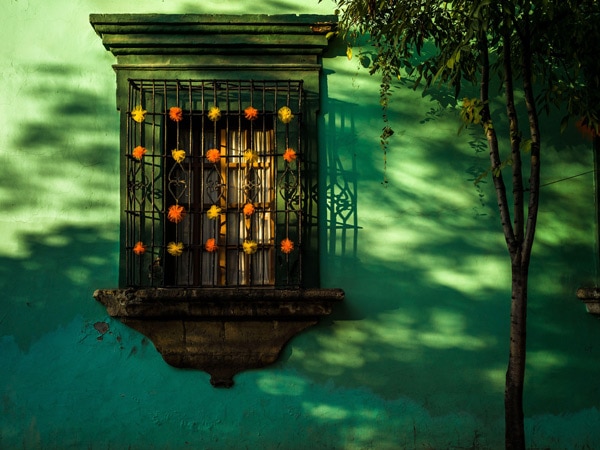
Family homes are adorned with artificial flowers on the Day of the Dead.
Celebrations in Oaxaca tend to be more spiritual and authentic, making its cities and towns the best in the country to experience this ancient Aztec ritual, with the action centred in local cemeteries – ask locals where to go.
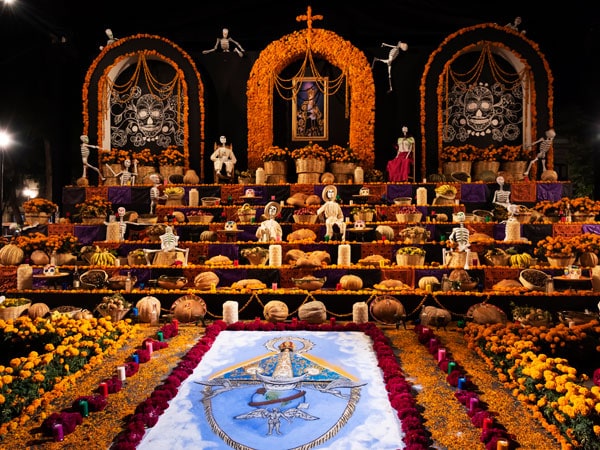
Elaborate altars on Día de los Muertos typically consist of flowers, bread and fruit.
4. Fête du Vodoun, Ouidah, Benin
Travelling with: Catherine Marshall
Ceremonial drumbeats herald the start of the annual Fête du Vodoun, held on a beach in Ouidah each January. Raffia-mantled zangbeto (Guardians of the Night) float across the sand like levitating haystacks; fetish priests tip their hats and summon the ancestors; tranced dervishes spin, their skin aflame with self-inflicted lashes and damp with maize paste and palm oil.
Myths of sorcery and black magic are dispelled here; instead, vodouns celebrate the protective power of gods and ancestral spirits, including those who held fast to their beliefs when they were shipped off as slaves from this shore. “The religion has spread to Brazil, to Haiti, to Cuba through a terrible thing – slavery, which stole children from their home in Africa,” a speaker says. Adds Benin’s Minister for Tourism, Culture and Arts, Jean-Michel Abimbola: “It was with strength we preserved this part of our identity.”
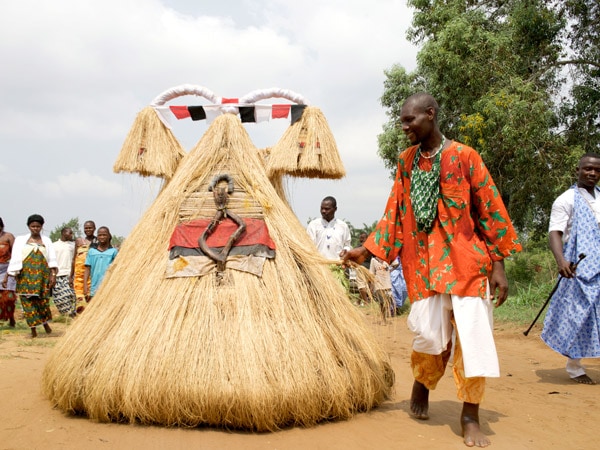
Celebrate the protective power of the gods and ancestral spirits at the annual Fête du Vodoun festival.
5. Cartagena, Colombia
Travelling with: Carla Grossetti
Gain a magical perspective on the colourful coastal Caribbean city of Cartagena in Colombia, where writer Gabriel García Márquez found much inspiration. They say truth is stranger than fiction and it’s said the late Nobel Prize-winning author drew on his out-there experiences of the city to weave ribbons of magic realism into his novel, Love in the Time of Cholera.

The Cathedral of San Pedro in Cartagena is one of the many highlights of the city. (Image: Abercrombie & Kent)
Journey through the cobbled streets of the Old City during a Colombia Revealed tour with Abercrombie & Kent to discover the romance of the rum-soaked city firsthand. The 14-day tour also ventures to the heart of coffee country and into an underground Salt Cathedral.
6. Peggy Guggenheim Collection, Venice, Italy
Travelling with: Elizabeth Whitehead
Peggy Guggenheim was an American heiress, an enigmatic eccentric and above all, a self-proclaimed ‘art addict’. Her vast art collection, which she began acquiring in the late 1930s, spans the likes of René Magritte, Salvador Dalí, Joan Miró and Marcel Duchamp.
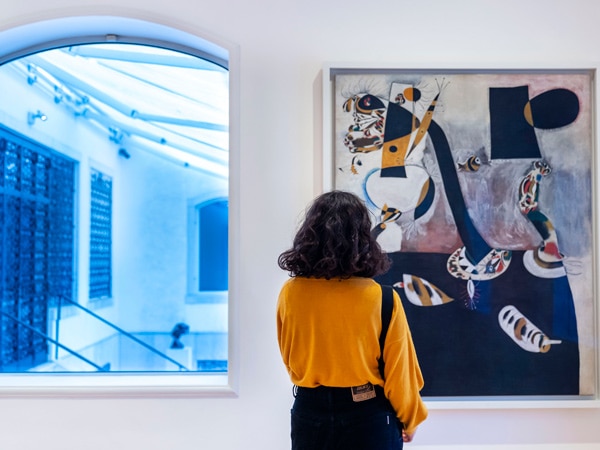
Browse Peggy Guggenheim’s vast art collection in Venice. (Image: Matteo De Fina)
Altogether, the Peggy Guggenheim Collection serves as an exquisite catalogue of modern art and holds the works of some of the 20th century’s most creative minds. The collection is fittingly housed in an 18th-century Venetian palace on the Grand Canal, which was also Guggenheim’s home for three decades until her death.

Peggy Guggenheim sought to distinguish herself as a self-proclaimed “art addict”. (Image: Matteo De Fina)
7. Goulding’s Lodge & Museum, Monument Valley, USA
Travelling with: Katie Carlin
Hollywood’s love affair with Monument Valley began during the Great Depression, when Harry and Mike Goulding gambled their last 60 bucks on a trip to Los Angeles with one goal: bring the movie-making business back home. Armed with an album of photos, it didn’t take long to get the attention of director John Ford.
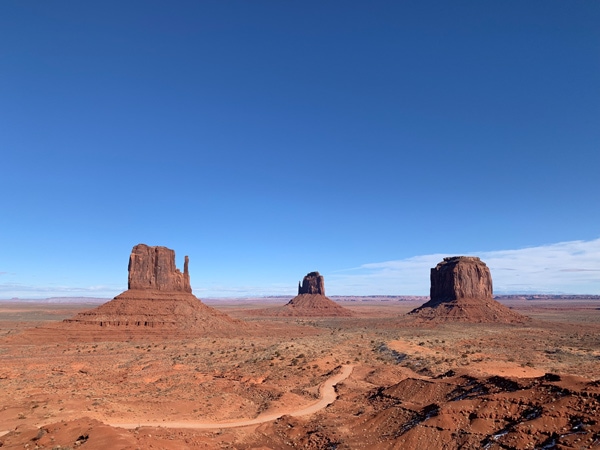
Monument Valley boasts towering sandstone buttes. (Image: Katie Carlin)
Three days later, Stagecoach began filming at Goulding’s Trading Post – bringing with it some much-needed income for the local Navajos, who were quickly recruited as paid extras. Goulding’s Lodge and Museum remains the gateway to exploring the towering sandstone masterpieces of Monument Valley Navajo Tribal Park to this day.
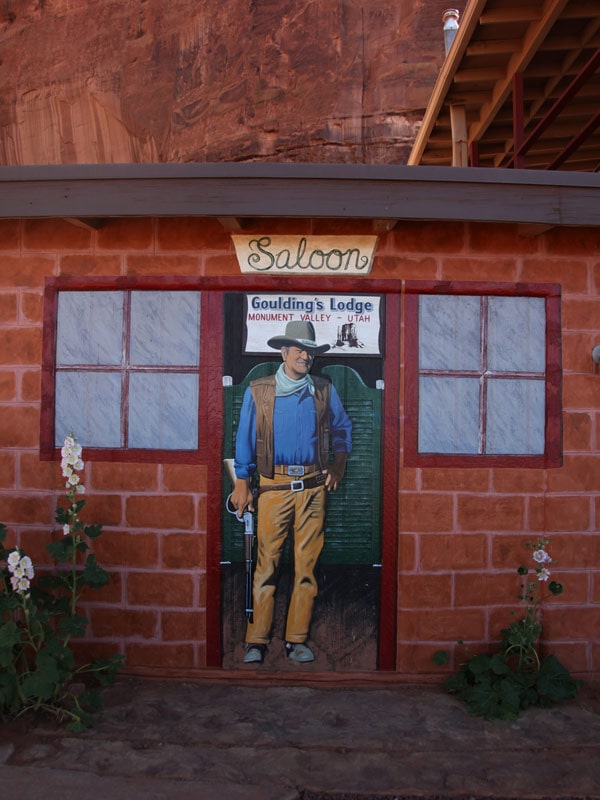
The famous John Wayne Saloon at Goulding’s Lodge and Museum.
8. Transylvanian castles, Romania
Travelling with: Elizabeth Whitehead
Transylvanian castles are infamous by association with Dracula and vampires of folklore. But other than that, they are marvels of Gothic architecture that dot the rolling Transylvanian countryside.

Dracula is believed to have slept in Bran Castle.
The most well-known of these is Bran Castle, an imposing structure crowned with red-tiled turrets perched atop a hill surrounded by thick forests. Its appearance evokes fairy tales of old, bringing mystery, lore and folk legends to life.
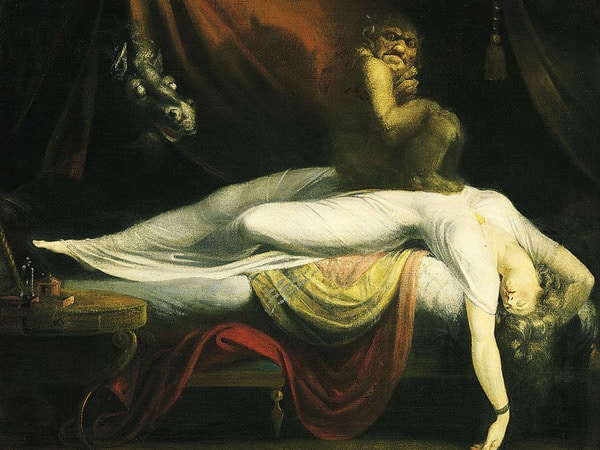
The Nightmare by Henry Fuseli depicts an incubus on a woman.
9. Slave Castles, Ghana
Travelling with: Catherine Marshall
A portal framing the Atlantic Ocean distils history’s truth: the Door of No Return, through which some of an estimated 12.5 million Africans were funnelled onto ships bound for the Americas during the 400-year transatlantic slave trade. These doors are a feature of the three UNESCO-recognised castles strung out along Ghana’s coast – Cape Coast Castle, Elmina Castle and Osu Castle (Fort Christiansborg).
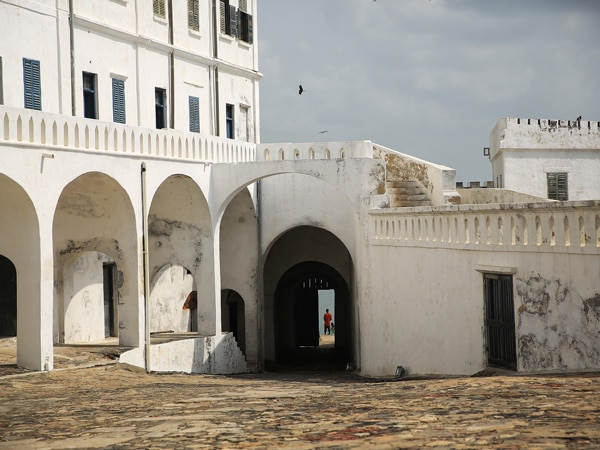
Cape Coast Castle was originally a 15th-century Portuguese Feitoria. (Image: Catherine Marshall)
Guides tell of merchants and traders who lived on the breezy upper floors and of slaves imprisoned in the dungeons below. But their stories are most acutely absorbed as I stand on the threshold, at the Door of No Return. Pirogues dance on the bay and birds flash across the sky; against this incongruent backdrop, I lay my footprints upon those from other centuries.

Elmina Castle is perched on the southern Cape Coast.
10. Paro Taktsang, Paro, Bhutan
Travelling with: Sarah Reid
There are hilltop monasteries. And there is Paro Taktsang, or the Tiger’s Nest. A sacred Buddhist site perched precariously on a cliff ledge some 900 metres above the ground (and 3120 metres above sea level) near the city of Paro in Bhutan, the monastery dates from 1692, built around the cave where the great Guru Rinpoche, one of the founding fathers of Buddhism, meditated for three years in the 8th century.
It takes the better part of a day to make the steep return trek here on foot, which makes the experience of visiting its serene temples packed with chanting monks feel all the more significant.
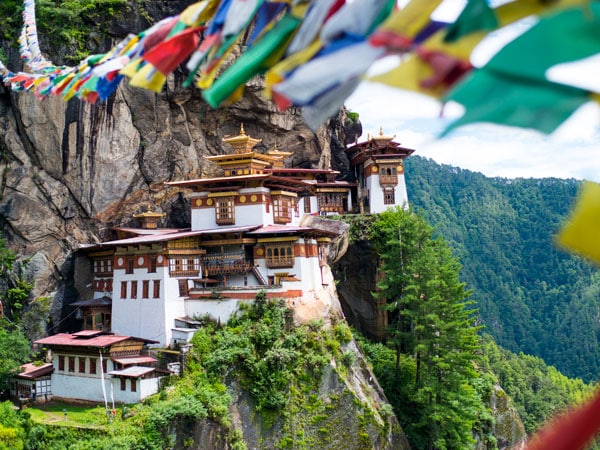
Taktsang Palphug Monastery sits on the cliffside of the upper Paro Valley in Bhutan.
11. The concept of Mālama, Maui, Hawaii
Travelling with: Carla Grossetti
Mālama is a way of life in the Hawaiian Islands and a concept that is taken very seriously. The Hawaiian word for caring and nurturing for everything from the environment to the culture has community and altruism at its heart. And it’s that concept that is driving the #MālamaMaui movement, inviting ohana (family) far and wide to support relief efforts after the devastating loss of life and livelihoods caused by the wildfires that razed the West Maui community of Lahaina.
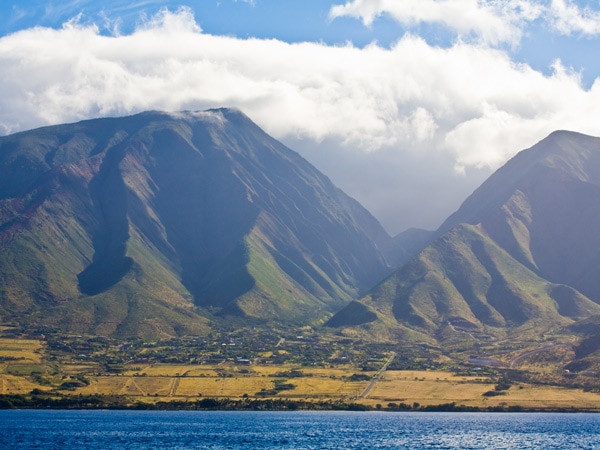
The lush tropical Hawaiian landscape of Maui is famed for its beauty.
The Aloha Spirit has also been evident from the get-go with everything from donations of food and financial assistance to accommodation aimed at those affected by the tragedy.

Poi is a staple Polynesian food prepared by pounding cooked starch on a wooden board. (Image: Hawaii Tourism Authority/Heather Goodman)

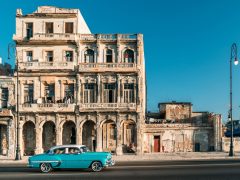
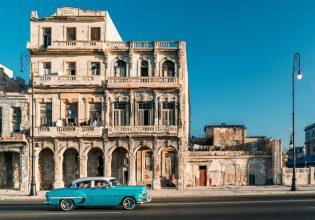



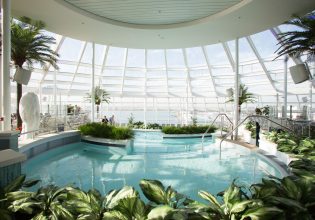




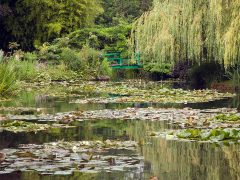
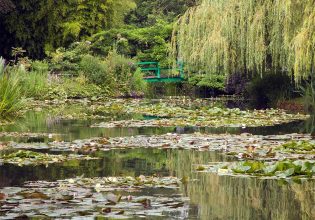

LEAVE YOUR COMMENT